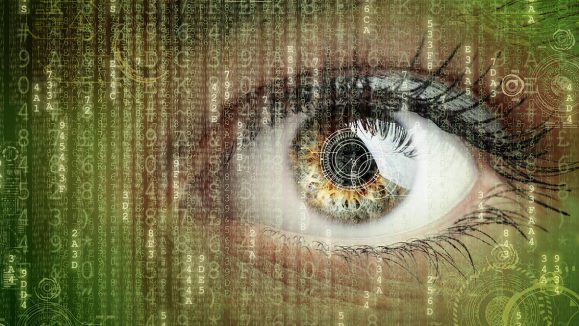It’s only been just over a couple of weeks since the start of 2023 and already news about artificial intelligence (AI) is across our social media feeds and apps. From artists complaining about the rise of AI-generated art taking their jobs away, to universities agonizing about how chatbots are beginning to interfere with the ability of professors to teach students properly (which, we think, is somewhat odd). Barely 20 days into the new year and such wailing, tearing of cloth, and gnashing of teeth about AI in the wider community yet last year the atmosphere could hardly have been more different for the topic in ophthalmology.
During the 15th Congres of the Asia-Pacific Vitero-Retina Society (APVRS), held on November 18-20 in the capital of Taiwan – Taipei – AI was discussed in depth during a number of symposiums. One of the most fascinating was held on the penultimate day of the conference and was dedicated to investigating how AI technology is and can be used to significantly improve patient outcomes in retinal treatment. Artificial Intelligence in Retinal Diseases (we do like a concise title) covered ‘where the state of the art is, and where it may be going as AI has the potential to disrupt and improve the clinical practice of retina.’
Potential Now and in the Future
The first presentation given during this symposium was AI for Retinal Disease Classification: Past, Present, and Future, provided by co-chair Dr. Peter Campbell, an associate professor of ophthalmology and retina specialist at the Oregon Health & Science University (Portland, Oregon, USA). Dr. Campbell emphasized that AI is best utilized when applied to tasks that it can do better than humans and in ophthalmology, these tasks include imaging segmentation, assistive diagnosis, and potentially autonomous diagnosis. He views these factors as being split into two categories, the former two being what AI can do for clinicians now, and the latter, as what AI will be able to achieve in the (near) future.
For example, when it comes to assistive diagnosis Dr. Campbell reported on how AI technology is able to effectively triage patients by the acuity of diagnosis during a study on ‘diagnosal and referral rates’ in retinal diseases. When it comes to the future application of AI (which as he pointed out could be as early as months, not years or decades), it could soon replace humans in making full diagnoses where the ophthalmologist is taken completely out of the initial loop. Dr. Campbell stated that this is most likely to occur with conditions that can be readily diagnosed via imaging like diabetic retinopathy, and pointed to one study that found that ‘Eyenuk AI was more effective in diagnosing this disease than human-performed dilation exams.’
AI – Are We Nearly There Yet?
The future of AI’s involvement in ophthalmology was a consistent theme throughout the symposium as exemplified by another presentation we would like to highlight; Retinal-Image Based Oculomics: Where Are We Going? This was provided by Dr. Yi-Ting Hsieh, an ophthalmologist at the National Taiwan University Hospital (Taipei, Taiwan), whose overview of what oculomics are and how it can be applied was particularly interesting as it is fundamentally predicated on AI.
According to Dr. Hsieh, an oculome is comprised of a complete set of macroscopic, microscopic, and molecular ophthalmic features associated with health and disease. Therefore oculomics as an overall concept is made up of the comprehensive decrypting of the oculome by integrating the information generated by AI-driven multimodal imaging to identify the specific ophthalmic biomarkers of systemic diseases.
Dr. Hsieh believes that oculomics is an ideal candidate for retinal imaging in ophthalmology due to its multimodal imaging component, and it should also find broad application in a number of other fields ranging from cardiovascular diseases, neurodegenerative diseases (also with an ocular component), psychiatric conditions and more. AI, he said, will play an important role in pushing oculomics forwards, the main challenge is that ‘ophthalmologists remain prickly or even skeptical to AI and its accuracy.’
Do Robots Dream of Electric Ethics?
One of the last presentations that really emphasized the validity of the metaphor ‘saving the best for last’ was provided by Dr. Emily Chew of the National Eye Insitute (Bethesda, Maryland, USA), in her presentation Data Privacy and Security for Retinal Disease. Her report was particularly interesting as, while it’s easy (and important) to focus on the technological advancements offered by AI technology, doctors and clinicians should also consider the ethical and privacy concerns that this technology raises as well. After all, Dr. Chew reported that every retinal image presents a unique vascular pattern that can be used to identify individual patients, presenting a considerable security issue.
A sub-committee that Dr. Chew is a member of at the National Eye Institute was set up to consider privacy issues that are of relevance to AI, in both retinal imaging and other related fields. Some of the recommendations that her sub-committee agreed on were using a federative/collaborative learning process to ensure that private data sets don’t leave individual institutions to boost security, and using an opt-in agreement system rather than opt-out to garner greater variety in patient feedback. Dr. Chew also recommends promoting the highest quality privacy-enhancing technology, recognizing ‘dignity and equal rights among patients,’ and constantly developing one’s knowledge about how data can potentially be used.
Keen to learn more about how AI can change retinal imaging? Or perhaps you might be concerned that one day a device looking vaguely like a 1980s-era Arnold Schwarzenegger will be delivered to your clinic and you want to forestall the coming robot-related apocalypse? Well if you’re the latter you may need to chill out, otherwise head over to the APVRS website to watch the symposium in full to find out more!
Editor’s Note: The 15th Congress of the Asia-Pacific Vitreo-retina Society (APVRS 2022) was held on November 18 to 20, 2022, in Taipei, Taiwan. Reporting for this story took place during the event.



